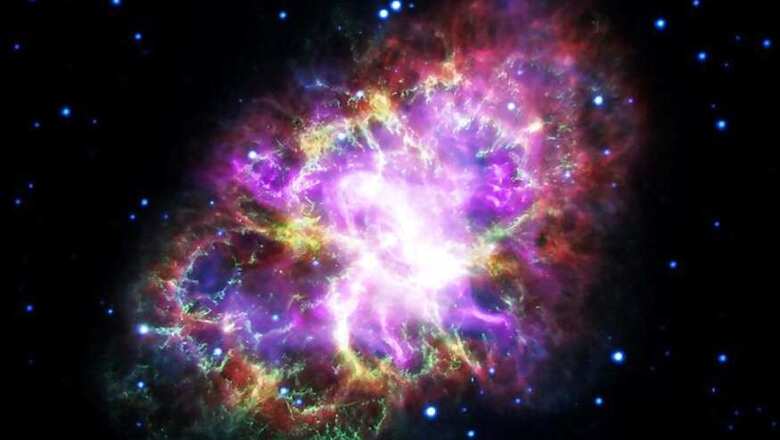
views
In an interesting find, Indian astrophysicists have unearthed a nearly 5,000-year-old rock carving in Kashmir which, they believe, is the oldest record of supernova and sky chart found in human history. The rock carving -- known to be the earliest form of human expression -- found in Burzahama region in Kashmir is on an irregular stone slab with a size of about 48 cm by 27 cm. The figure shows two bright objects in the sky with rays of light coming out of them and a hunter spearing an animal below the first object.
There is another animal to the left of the hunter drawn above the hunter's spear, representing a hunting scene. The two objects are a pair of bright stars at the local zenith at the beginning of the hunting season. The two objects cannot be Sun and Moon since, with such proximity to the Sun, the Moon would be in a partial phase around the new and hence not very bright, said researchers led by Hrishikesh Joglekar from the Tata Institute of Fundamental Research (TIFR) in Mumbai.
"The stone drawing is a complete sky chart of the night on which the Supernova was first observed by unknown observers around 4,500 BC," Joglekar said in a statement on Tuesday.
A supernova is a transient astronomical event that occurs during the last stellar evolutionary stages of a massive star's life, whose dramatic and catastrophic destruction is marked by one final titanic explosion. The researchers had ruled out the possibility that the observed object is a star pair or comets, halos and terrestrial events. They investigated the possibility that the rock drawing is the record of the supernova HB9 and found that only one Supernova remnant HB9 meets all the criteria and it exploded around 4500 BC with a brightness comparable to the brightness of the Moon.
"We suggest that the partially drawn object is HB9 since it would be irregular and that the second bright object is Moon since the apparent magnitude of HB9 is closer to that of the Moon," Joglekar said, "This is not a terrestrial hunting scene but is actually a sky-map giving location of prominent constellations and the Moon on the day the supernova was first observed."
Watch: Bose QuietComfort 35 ii Review | Noise-Cancellation Meets Google Assistant


















Comments
0 comment